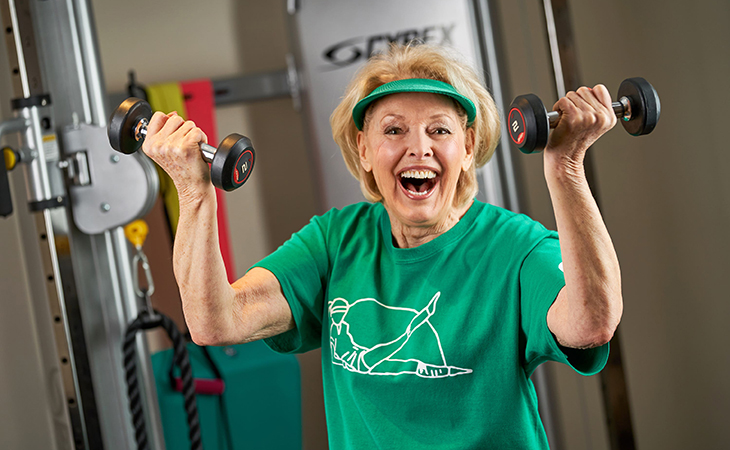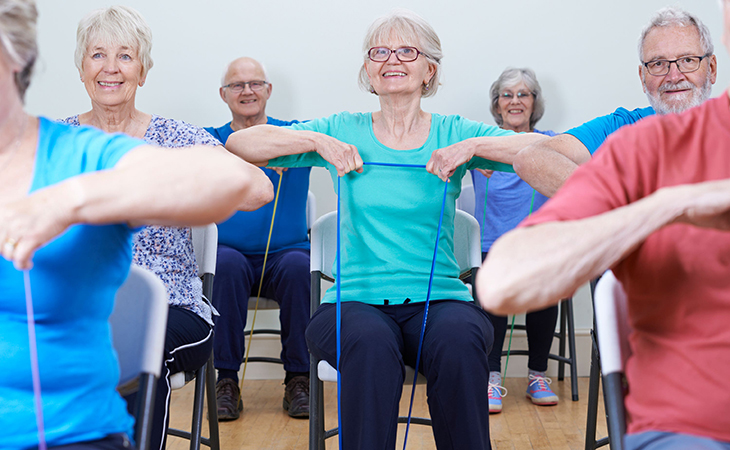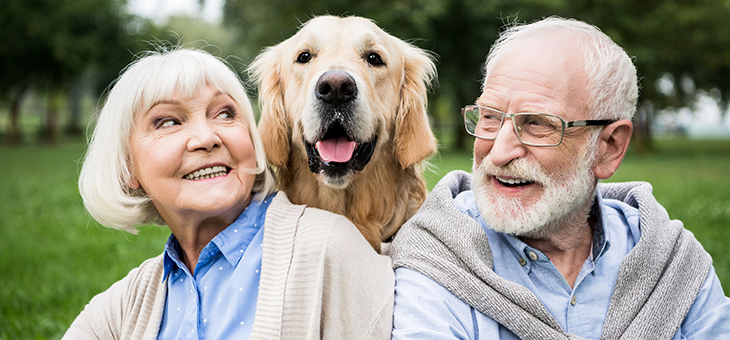We’re all living longer than ever, so it’s a good idea to think about how you can help yourself stay as fit and well as possible during those golden years.
Both medics and fitness experts such as Diana Moran, ‘The Green Goddess’ of 1980s breakfast TV, agree that much of ageing well is down to looking after yourself, keeping active – even though it’s tempting not to as your joints get creakier – eating healthily and staying socially connected.
And if you need proof that making an effort brings results, look no further than Ms Moran. At 81, the super-fit granny, who still does a daily fitness routine, has just brought out another exercise DVD, called Keep Fit And Carry On, to get older people moving – even if it’s just in their chairs.

“It’s so important to retain as much movement as possible, however limited your physical abilities are,” says Ms Moran. “I know what a difference it makes. Life is so much richer if you’re physically fit. Chances are you’ll be mentally very fit as well.”
Read more: Resistance training benefits both men and women in older age
Tahir Masud, a professor of geriatric medicine and president of the British Geriatrics Society, points out that keeping up good levels of physical activity can reduce the risk of dementia and depression by up to 30 per cent, type 2 diabetes by 40 per cent, and cut the chances of getting certain cancers, such as breast and colon cancer, by 20-30 per cent. Being physically active also means you’re 30 per cent less likely to suffer falls. “All the evidence shows that if you’re motivated enough to do proper lifestyle measures, it can really make a difference,” he says.
Here, Ms Moran and Prof. Masud outline seven of the best ways for older people to keep fit and healthy.
1. Keep active
One of the most important things about looking after yourself as you get older is making sure you’re as active as possible, stresses Prof. Masud, who says older people should aim for 150 minutes of moderate intensity physical exercise per week, like walking, jogging or cycling, with a particular emphasis on maintaining strength and balance.
Ms Moran’s Keep Fit And Carry On DVD, which she’s proud to say she home-filmed herself during lockdown, is designed to get older people moving gently. “I’m very, very aware of how exercise – moderate, I’m not talking about going to the gym and pumping iron and all that business – is important to maintain your good health,” she says.
“Joe Wicks was wonderful and motivated children in particular, but I was concerned about us older people. I realised many were all self-isolating, as I was, and many were very lonely and had a lack of a lifeline – that’s why I concentrated on exercises for people with perhaps limited mobility, and those who maybe haven’t exercised for a while.”

And there are numerous options for people who struggle to get out of a chair or use a wheelchair, Ms Moran adds, including both upper and lower body exercises. “It’s surprising how much you can actually do sitting in a chair,” she says. This includes weights workouts using cans rather than dumbbells, and strengthening activities using exercise bands or even an old pair of tights.
“When you do any form of exercise, there are four immediate benefits,” Ms Moran explains. “The first one is strength – if you’re getting up off a chair, you’re using your quadriceps muscles, you’re keeping your legs strong. If you’re lifting a can, you’re keeping your arms strong.”
“The next is that physical activity and lifting things keeps you supple, and if you’re getting up and moving, you’re improving your stamina and your cardiovascular system. If you get it right and eat a reasonably good, mixed healthy diet, then chances are you’re going to keep in shape.”
2. Minimise sedentary time
If managing proper exercise is too much, Prof. Masud says people should at least try to get up a bit more frequently, if possible, rather than being too sedentary for long periods. “You shouldn’t just sit in front of the TV without getting up regularly,” he says. “If you’re watching a program for an hour, you should get up a few times, even if it’s to make a cup of tea.”
3. Avoid ‘bad’ things
It’s an obvious one, but just because smoking and drinking haven’t killed you yet doesn’t mean they won’t get you in the future. “Older people need to reduce smoking and excessive alcohol,” says Prof. Masud. “There’s lots of evidence that if you want to stay healthy as you get older, you’ve got to cut back on those particular things.”
4. Good nutrition
“The important things are to cut back on carbohydrates and sugar, but what’s stressed is that an adequate amount of protein, for example eggs, meat, fish, and pulses, is really important,” says Prof. Masud. “If you don’t have enough protein, you’ve got an increased chance of becoming frail, which causes problems such as falls and other issues.”
In addition, everyone – at any age – needs to try to eat five portions of different fruit and vegetables a day, and plenty of fibre.
5. Stay connected
“Loneliness isn’t a good thing for your future health,” says Prof. Masud. “And as you get older, if you get socially isolated and lonely, it can increase the risk of heart disease, depression and dementia.”
Read more: The power of connection
Although the brain isn’t technically a muscle, it still needs ‘exercising’ like one. “If you don’t use it, you’ll lose it,” explains Prof. Masud. “You start developing cognitive impairment and losing your memory.”

And lonely older people may have a higher risk of heart disease simply because having more reasons to socialise means you’re more likely to get out and about, which means keeping your body and brain more active. Getting out and about also reduces the risk of obesity, which can affect the heart too.
6. Get your jabs
Older people should have the flu vaccination every year, stresses Prof. Masud, plus any other important jabs, such as those for shingles and pneumonia. Talk to your doctor or pharmacist about what you might need.
7. Strengthen your bones
More than 30 years ago, Ms Moran suffered a typical osteoporotic fracture to her wrist while ice-skating. Many years later, when she was 79, she was diagnosed with osteopenia, the condition that precedes osteoporosis. “I know how important it is to do weight-bearing exercises,” says Ms Moran, who also works with the Royal Osteoporosis Society. She joined forced with the charity to write her book Beating Osteoporosis, highlighting how to reduce the risk of weaker bones.
Read more: Best supplements for osteoporosis
This can include things as simple as “walking, gardening, putting weight on your spine, hips and legs and lifting up, lifting your grandchildren”, she adds. “You’re putting weight on your wrists, and your wrists, hip and spine are the areas where you could be affected by osteoporosis and have a fracture.”
Do you incorporate these seven tips into your daily life? Do you have any other tips to add?
– With PA
If you enjoy our content, don’t keep it to yourself. Share our free eNews with your friends and encourage them to sign up.

